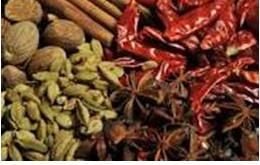Class 3 Exam > Class 3 Tests > EVS for Class 3 > Test: Foods We Eat - 2 - Class 3 MCQ
Test: Foods We Eat - 2 - Class 3 MCQ
Test Description
15 Questions MCQ Test EVS for Class 3 - Test: Foods We Eat - 2
Test: Foods We Eat - 2 for Class 3 2024 is part of EVS for Class 3 preparation. The Test: Foods We Eat - 2 questions and answers have been
prepared according to the Class 3 exam syllabus.The Test: Foods We Eat - 2 MCQs are made for Class 3 2024 Exam. Find important
definitions, questions, notes, meanings, examples, exercises, MCQs and online tests for Test: Foods We Eat - 2 below.
Solutions of Test: Foods We Eat - 2 questions in English are available as part of our EVS for Class 3 for Class 3 & Test: Foods We Eat - 2 solutions in
Hindi for EVS for Class 3 course. Download more important topics, notes, lectures and mock
test series for Class 3 Exam by signing up for free. Attempt Test: Foods We Eat - 2 | 15 questions in 30 minutes | Mock test for Class 3 preparation | Free important questions MCQ to study EVS for Class 3 for Class 3 Exam | Download free PDF with solutions
Detailed Solution for Test: Foods We Eat - 2 - Question 1
| 1 Crore+ students have signed up on EduRev. Have you? Download the App |
Detailed Solution for Test: Foods We Eat - 2 - Question 3
Detailed Solution for Test: Foods We Eat - 2 - Question 4
Detailed Solution for Test: Foods We Eat - 2 - Question 5
Test: Foods We Eat - 2 - Question 6
Processed food like breads, burgers, pizza and jams are rich in
Detailed Solution for Test: Foods We Eat - 2 - Question 6
Test: Foods We Eat - 2 - Question 7
The combinations of buckwheat, chickpea, corn and millet is ___________.
Detailed Solution for Test: Foods We Eat - 2 - Question 7
Detailed Solution for Test: Foods We Eat - 2 - Question 8
Detailed Solution for Test: Foods We Eat - 2 - Question 9
Test: Foods We Eat - 2 - Question 10
Washing of cut or peeled fruits and vegetables may loose some
Detailed Solution for Test: Foods We Eat - 2 - Question 10
Test: Foods We Eat - 2 - Question 11
Which components of food do not provide energy nor help in growth
Detailed Solution for Test: Foods We Eat - 2 - Question 11
Detailed Solution for Test: Foods We Eat - 2 - Question 12
Detailed Solution for Test: Foods We Eat - 2 - Question 13
Detailed Solution for Test: Foods We Eat - 2 - Question 14
|
61 videos|177 docs|48 tests
|
Information about Test: Foods We Eat - 2 Page
In this test you can find the Exam questions for Test: Foods We Eat - 2 solved & explained in the simplest way possible.
Besides giving Questions and answers for Test: Foods We Eat - 2, EduRev gives you an ample number of Online tests for practice



















